
Word problems are often the most challenging thing for kids to solve and for teachers to teach. I know I have had many, many students who struggled with them and like many others, I fell into the keyword and the CUBES strategy trap!
Keywords are words kids can find in word problems that may clue them into the operation to use to solve a particular word problem, but *spoiler alert* they aren’t as reliable as they may seem. There may be keywords that are just part of a sentence rather than pointing to an operation or there may be no keywords at all! (And, If you want to know more about why keywords can fail kids, this post about addition and subtraction word problems is for you!)
What is the CUBES Strategy?
The Cubes strategy is almost like a recipe for solving word problems. It is very structured and easy for kids to follow:
- Circle the numbers
- Underline the question
- Box the keywords
- Eliminate extra information
- Solve
So, where does the Cubes strategy go wrong? You already know the problem with keywords but let’s dig into the rest.
Where the CUBES Strategy Falls Short
Step 1 has kids circling numbers. I know I’ve had students that I lovingly refer to as “number pluckers.” They often don’t read the problem at all, go straight to the numbers, and perform an operation. Unfortunately, the CUBES strategy can reinforce that by specifically asking kids to start by circling the numbers.
Underlining the question is the second step. There’s nothing really wrong with kids underlining the question but it takes the focus off the context of the situation itself. Do we want kids to know where the question is? Absolutely. As a part of this strategy though, it is just another box to check rather than something that pushes kids’ thinking.
The third step asks students to box keywords. Now that much of the problem is circled, boxed, or underlined, they now cross out extra information. I’ve had students complete this step by crossing out every word that they hadn’t already dealt with. Unfortunately, that eliminates the entire context of the problem, leaving it perfectly set up to number pluck, use the keywords do whatever operation those words suggest.
Finally, students solve the problem. Will the CUBES strategy work sometimes? Yes, definitely! My own students had some success with this strategy. Unfortunately, I was selling them short, and now know I can ask my students to use their literacy skills to approach word problems more effectively.
If Not the CUBES Strategy, Then What?
Now that we’ve dismantled the CUBES Strategy, let me fill you in on a different approach. Hear me out on this: word problems, or story problems as I like to call them, are the perfect place to tie in literacy! One problem with the CUBES strategy that I haven’t mentioned yet is that it never explicitly tells kids to read the problem. Of course, it’s implied but kids are often literal thinkers and if we don’t have that explicitly stated, they aren’t going to do it. So, first, I practice reading the problem with my students. I emphasize that when I read a problem, I don’t just read it once or even twice, but at least 3 times.
Enter: The Three Read Protocol
You may have heard about the 3 Read Protocol. This protocol is a way to approach word problems that puts an emphasis on thinking. If you search for the 3 Reads Protocol you will find different explanations for what kids should be thinking about after each read but regardless of those different things, the idea is that we want kids to be thinking about the situation before they move to solve the problem. This is where we really start to see kids dig deep into their knowledge.
One of my favorite literacy lessons I have taught was when I had kids close their eyes and make a movie in their minds about what I was reading aloud to them. We took turns sharing what we pictured and it was always fun to hear how we all pictured slightly different things even though we were all listening to the same book. I bet you also teach your students to visualize what they read. That skill can be used successfully with solving word problems as well. Here’s how I tie all of this together with the problem below:
There are six necklaces. Each necklace has 10 beads. 3 beads are red and the rest are blue. How many blue beads does each necklace have?
Read One
Read the problem and make a movie in your mind. What is happening in the story? Who are the characters? What are they doing? What is the setting?
When teaching this for the first time, I often have younger students draw a picture or describe what they see in their minds to a partner with a lot of detail. Often story problems don’t have a specific setting so I ask kids to imagine where the story might be taking place. We might not even know who the characters are but we can make a good guess.
When we are discussing this problem during read 1, a kid might say, “It doesn’t say where we are or who is in the story but I am picturing the necklaces in a jewelry store where some kids are shopping. Maybe it’s at Claire’s! So necklaces at Claire’s have red and blue beads”
Read Two
What can we count or measure?
During this step, we are talking about the numbers in the story. While this sounds like the C step in the CUBES strategy, the difference is we don’t stop at circling the numbers. Instead, we are making sense of what the numbers are telling us. Here’s what that might sound like:
Student: “The numbers are 6, 10, and 3.”
Teacher: “Say more about that. What do the 6, 10, and 3 mean in the story?” Student: “There are 6 necklaces. Then each necklace has beads. There are 10 beads on each one and 3 of them are red.”
Teacher: “Can we count anything else?”
Student: “The blue beads but we don’t know how many there are.”
Read Three
What is the question and how can we get started solving it?
Here is where I have students think about what the story problem is asking. In our example, the problem is asking us to figure out how many blue beads are on each necklace. If we had skipped right to this step, we may see students doing things like adding 6, 10, and 3, not realizing the meaning of each of those numbers.
Instead, during this step, we are asking kids to think about what information they need to answer the question. During the discussion, students may come up with various approaches to solving the problem, such as drawing a picture of the necklaces, writing equations, and using manipulatives to act out the problem. Students can choose whatever approach works for them now that they’ve made sense of the problem. They’ve done a lot of thinking to help them make sense of the situation and now is when we set them free!
What do you think of the Three Read Protocol? Do you have another strategy you love for word problems? Drop a comment and let me know!

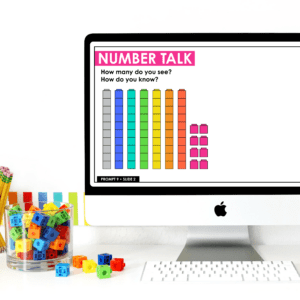
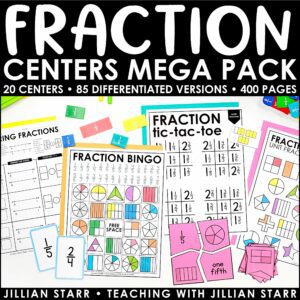
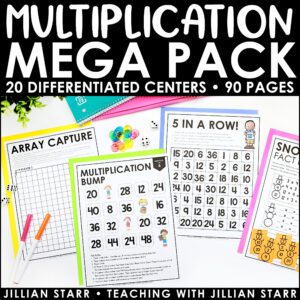
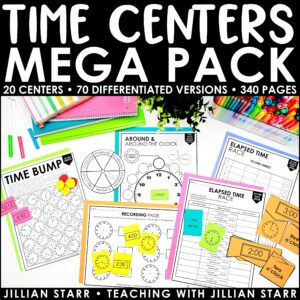
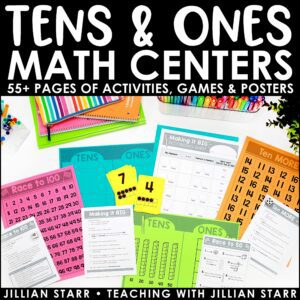

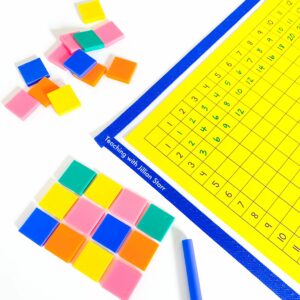
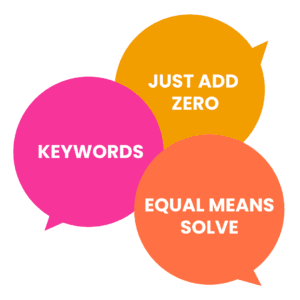


Love this! I do not like “key words” either. I tell my 3rd graders to make a movie about the problem too! I love this approach and will add the other two steps to our routine.
I love it! Visualizing is very important.
I think visualizing is a very important key to learning things. I am a visual and hands on learner.
I love this!!! I use the “make a movie” strategy, especially with fraction word problems. Since I teach at an arts integration school, I’ve also integrated theatre skills in math and had the kids create a story to go with the problem to help them visualize it.
I love this! I have struggled with the CUBES method for a while with my learners. This sounds like fun and fun is great!